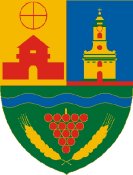Adony

The settlement of Adony, located at the East edge of Fejér county on the bank of the Danube River, has always been the scene of the peaceful co-existence or sometimes warlike meeting of various nations and cultures. Adony has been an inhabited settlement since the bronze age and then had been a military fortification, called Salina, of the Roman Empire as part of its Eastern \\\"limes\\\", i.e. the defensive line along its border; and later mentioned in the Middle Ages under the name of Odon as a royal estate and oppidum (borough) in charter records. This is the place from where the Hungarian king sent his last desperate call for assistance to the nobility of the country ... on the way to Mohacs where the Hungarian army of 40 thousand was destroyed by the 200 thousand army of the Turkish Empire in 1526. During the nearly one and half century of Turkish occupation the original Hungarian inhabitants of the settlement, serving as a Turkish fortification named Jancourteran at that time, partly escaped and partly perished.After the Turks were driven out at the end of the XVIIth century, in parallel with the starting slow re-settlement of the original population German and Slovakian populations appeared in significant numbers as new \\\"conquerors\\\" due to spontaneous settlement and intentional settling organized by the Austrian emperors along with the native Hungarian inhabitants and the almost native Serbs (living there for several decades). Among this mixed population the Germans became the dominant force both in numbers and their communal-cultural homogeneity.
Reading of mass in German had ceased already in last third of the XIXth century and, as a consequence, the use of the German language in everyday life and communication had been slowly lost. In the first half of the XXth century Adony, occupying an important central position in the region as district seat, continued to develop without interruption in the civic way of life. And, although its borough title was lost already at the end of the previous century, a really serious stagnation period was caused by losing its central role gradually due to socialist industrialization building a steel industry center at Dunaújváros (called Stalingrad at that time). After a short period of apathy, however, the development of the settlement gathered momentum again: an urban infrastructure was established during the past decades. The local community started to reorganize itself slowly from the mid-seventies, first in the framework of amateur arts movement primarily. This was the time when the \\\"Gyöngyvirág\\\" (Lily-of-the-Valley)Ladies\\\' Choir, the Folk Dance Ensemble and the Folk-Song Circle were formed in addition to the Brass Band functioning since 1927. Then, as the fruit of the last decade, numerous new societies, foundations, clubs, circles and associations: formal or informal social organizations have made the civil community of Adony more complete. The reviving local press is embodied in the parochial public newsletter Duna-Adony. In addition to the edition of numerous cultural and local history publications, the organization of exhibitions and presentations the program seriesrespect of infrastructure but still providing a rural environment in restfulness and personal nature.
Source: www.adony.hu








